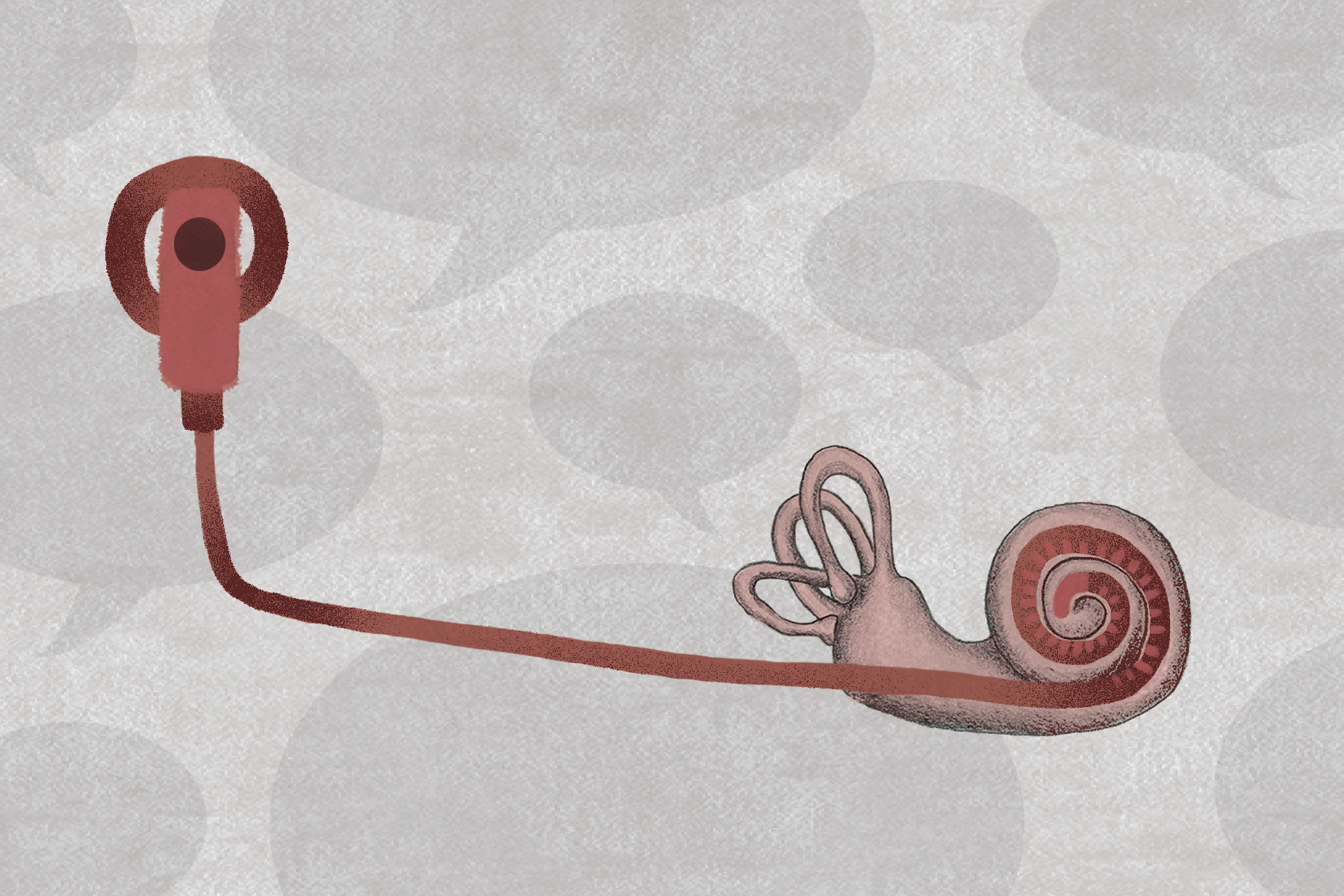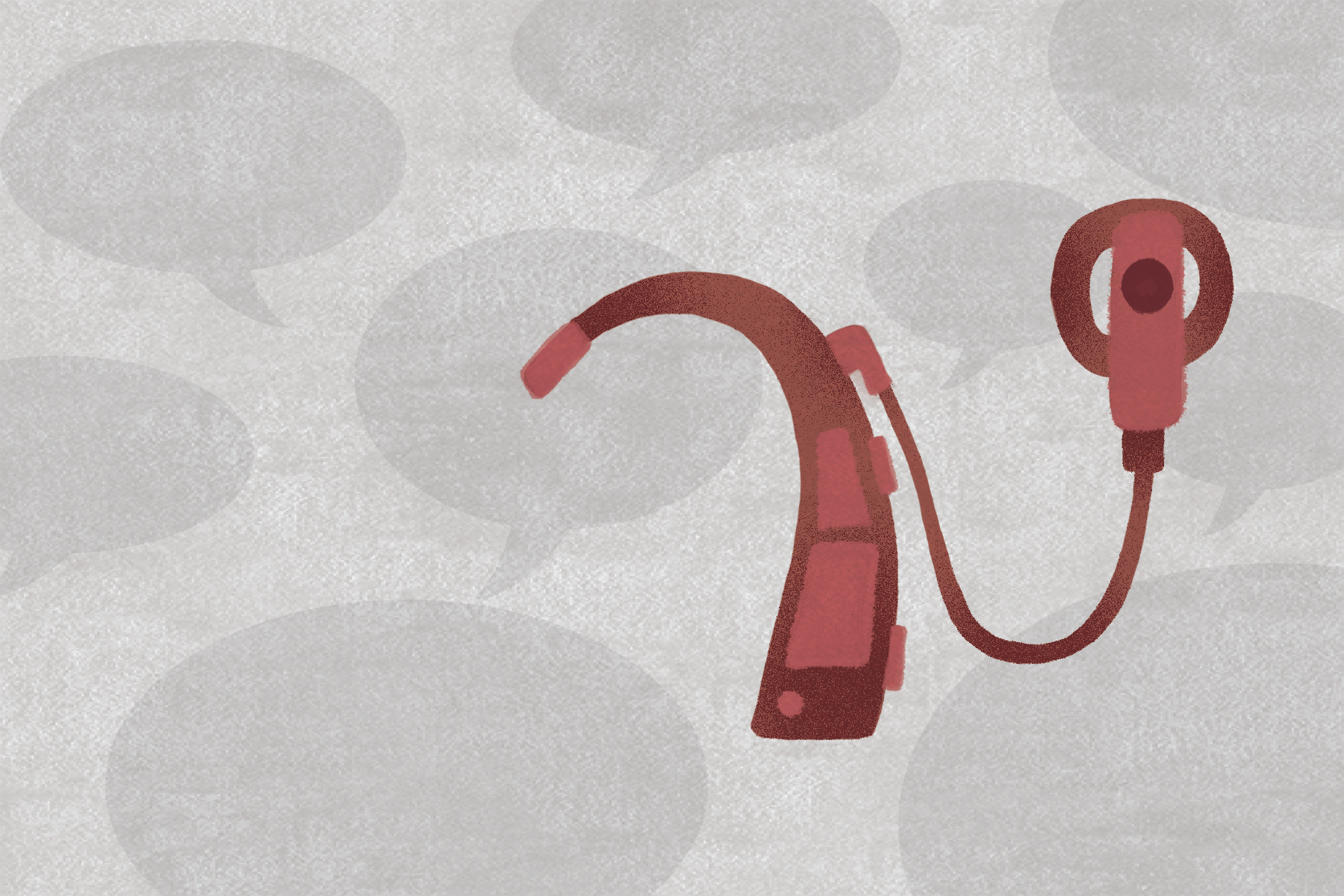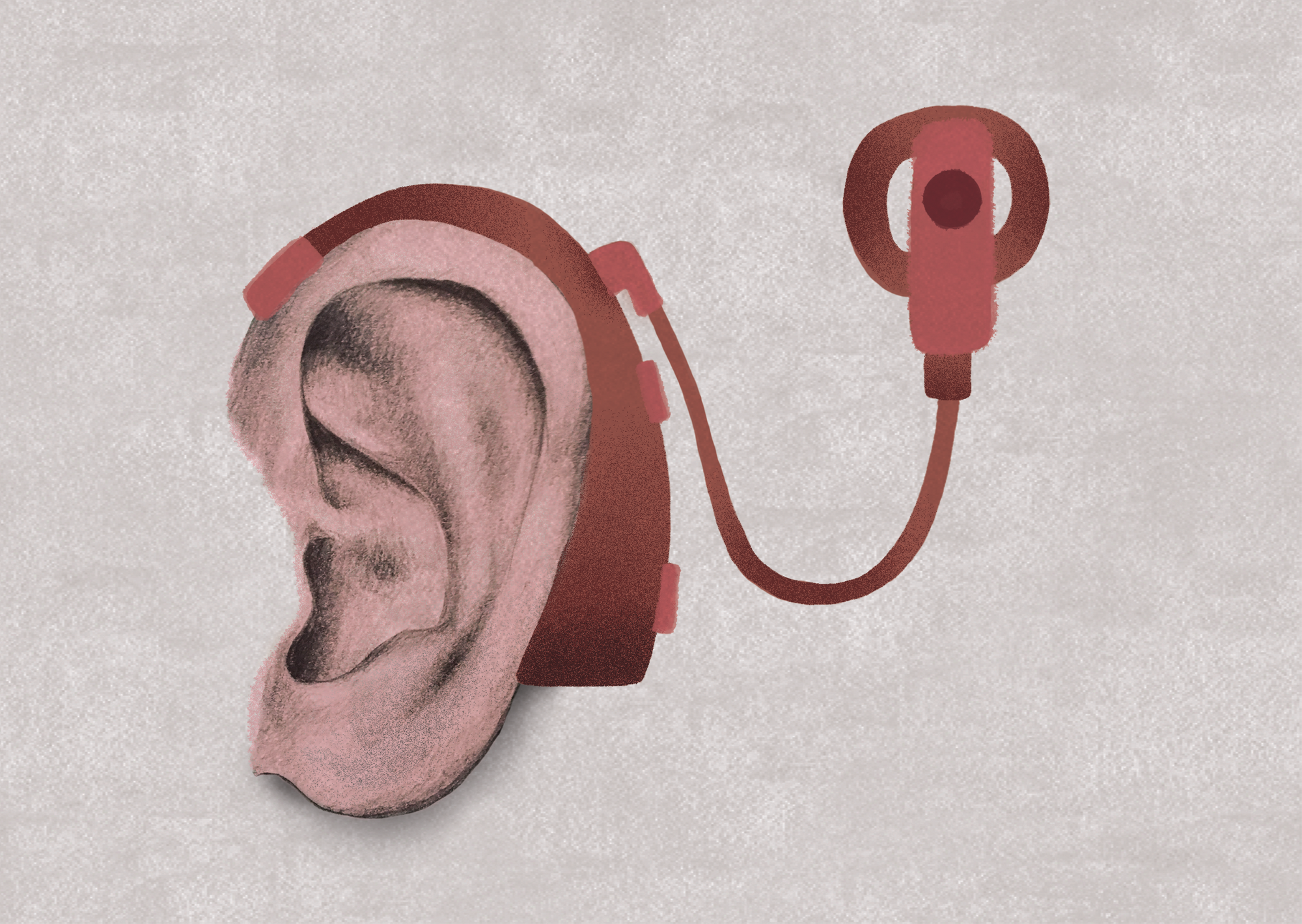The cochlear implant is an electronic device that restores auditory perception in a person with partial to severe deafness. The first cochlear implants date back to the 1970s [1]. During this time, both the device and the methods of installation were far less developed than those used today. Because of the state of technology in the 1970s, it was difficult to construct a device that could reproduce sound reliably. As a result, cochlear implants were only effective for people who were already proficient in verbal language before the onset of deafness. Over the past few decades, advances in technology have improved cochlear implants so they can be useful in helping people learn language. Current technology can assist with learning speech and allows most people to identify over 80% of spoken words. Users typically use both the sound they receive from speech as well as reading cues, such as lip reading, to increase the amount of words that they can correctly identify [1]. However, not all individuals experience the same success with cochlear implants; some may perform perfectly on a speech recognition test while others may have only a 10% success rate [2]. Improving upon the current technology may lead to a more universally beneficial implant. To create the best and most versatile device that interfaces with the ear in an effective way, we must first gain a better understanding of how the ear works.
Auditory Transduction
The cochlea is a chamber of liquid within the inner ear that transduces the pressure of sound waves caught by the outer ear. When the pressure changes, the liquid moves, causing hair cell receptors within the chamber to be deflected. As this happens, ion channels open and initiate an electrical signaling process that eventually passes the information through auditory nerves and the brain stem to the auditory cortex, the area in the brain that processes sound. Physiologically, deafness is the result of atypical, damaged, or underdeveloped hair cells. However, surgically implanted electrodes can bypass the hair cells and stimulate the underlying nerve cells that carry sound information. Instead of relying on pressure waves, a cochlear implant uses information from a speech-processing computer and microphone, both worn on the outside of the ear [1]. The machinery combines to create a hearing-aid-like object behind the ear with a wire leading to a coin-sized transmitter that conveys the information across the skin to the electrodes. In short, the implant communicates directly with the brain using the language the brain speaks: electrical signals.
Current Research and Technological Advancement
Today, over 300,000 cochlear implants have been installed worldwide [3]. As with many medical technologies, however, there is room for improvement. Currently, there are a few major areas of advancement for cochlear implants [4]. The first is to reduce the size of the implant, and the second is to allow for more electrode channels for stimulation. Ultimately, more channels allow for stimulation at a wider range of frequencies, resulting in a greater perception of pitch [5]. Single channel implants, on the other hand, do not allow as many frequencies to be encoded [4]. Researchers from Germany have been tackling these problems by experimenting with different 3D-printed metal and ceramic materials to try and make smaller implants with more stimulation channels. A smaller implant would be beneficial because it would reduce complications from the installation process, such as infections from surgery. Current infection rates from surgical implants are estimated to as high as 15%. Two ways to cut down on infection are to make the surgery quicker and less invasive [4].
Another possible direction for future innovation is to optimize the device by making it completely implantable, as opposed to having part of the device on the outside and the other part on the inside [6]. The external component of current implants is susceptible to water damage and can be dislodged. Internal installation, however, presents many difficulties, such as how to effectively gather sound, maintain a battery, and replace components in the event of malfunction. Researchers believe that one way the internally installed cochlear implants may gather sound is to use the middle ear to amplify the sound, as that is the natural function of the middle ear. The middle ear is still intact and working in most cases of deafness and can help optimize the function of the implant [6]. While research on the feasibility of these options is still being conducted, technological changes such as these may create implants that can benefit a wider range of users.

Considerations for Implantation
The effectiveness of cochlear implants differs between individuals because the costs and benefits of the device do not affect each person equally. In the case of children, the timeframe of when the cochlear implant is installed can play a critical role in its effectiveness. One study from Tolan et al. has shown that installing the cochlear implant by 12 months is optimal for developing language [7]. The primary reason is that there is believed to be a critical learning period for language development in children, and younger children are more adept at learning language. Children who are born deaf are often considered as candidates for cochlear implants. This suggests that installing cochlear implants early on may provide hearing-impaired children the opportunity to acquire speech and language in a similar way to non-deaf children [7].
In addition to the timeframe of implantation, the method of implantation is also important to its effectiveness. There are currently three main methods of implantation: unilateral, bilateral, and bimodal. A cochlear implant is installed on one ear for unilateral implantation and both ears for bilateral implantation. Bimodal implantation consists of a cochlear implant on one ear and a hearing aid on the other. Recently, a study at the University Medical Center Utrecht compared the performance levels of the unilateral and bilateral implants specifically [8]. The group of participants had some with unilateral and others with bilateral implants. The experiment involved different tests such as a speech-intelligibility test and a sound localization test. Speech-intelligibility tests include trying to identify speech and noise coming directly at the participant, identifying speech and noise coming from different directions, and identifying speech through silence. The sound localization tests were used to test if the participant could display awareness of a sound’s location. The tests were scored by the decibels (sound intensity) needed for the participants to register the sounds, so a lower score translated to more effective sound recognition. When it came to speech and noise, there was no statistically significant difference in performance as long as the information was presented from straight ahead or to the preferred ear. The bilateral installment, however, showed an advantage when noise was presented from multiple sources, specifically when it was played to the ear with relatively higher hearing loss [8]. Additionally, the study found that the bilateral group was better at sound localization.

This finding is consistent with the biological theory behind the function of having two ears: two ears allows for proper sound localization. One aspect of the theory involves the difference in time that sounds take to reach each ear. The nervous system uses this difference in timing to detect where the sound is coming from relative to the body. Another aspect of the sound localization theory is the relative intensities of the sound in each ear. The ear that is closer to the sound perceives a louder volume because the sound intensity drops with distance as it passes through the head to the other ear. The nervous system uses these mechanisms to localize sounds. Both mechanisms need two ears to acquire sound information, which is why having two cochlear implants helps with localization of sound.
It may seem as if the bilateral installment has the clear advantage in terms of performance, but one of the disadvantages is cost. A group of researchers in the Netherlands found that unilateral implants cost about €40,000 while bilateral implants cost about €80,000. They also realized that over a five- to ten-year period, the costs of maintenance was about €3,500 for unilateral and €7,000 for bilateral implants [9]. It is obvious that both unilateral and bilateral implants have their own specific costs and benefits, which must be considered by the user before making a decision.
Beyond financial costs, there are also ethical implications that may deter one from choosing to use a cochlear implant. The choice is not one-sided and is not black and white; with varying causes and types of hearing impairment, the use of cochlear implants can have complex implications for different users. It is important to acknowledge the impact that using an implant has on a deaf person with respect to their relationship with the Deaf community [10]. While using a cochlear implant might seem to create a stronger relationship between a deaf person and the hearing population, this is not always the case. Cochlear implants can also weaken the ability for members to feel as if they are full contributors to Deaf culture, creating a space where they may not feel comfortable in either the hearing or Deaf culture. As a cultural group, much of the Deaf community has expressed a preference for not using cochlear implants [10]. However, the critical point is that the user chooses to use a cochlear implant or not and must weigh personal costs and benefits before deciding a preference.

Conclusion
The development of cochlear implants over the last 40 years is something to be appreciated within the context of technological achievements in neuroscience. For those who are interested in partially restoring auditory function, the technology has provided unprecedented options for hearing. While this is true, the costs and benefits of choosing to use a cochlear implant are not always the same for all potential users, and the financial and ethical costs must be considered. In our pursuit of developing cochlear implants, it is important to also develop open minds to respect an individual’s choice surrounding the decision to use or not use the device. Ultimately, the choice to install an implant or not is the user’s alone and should be the choice with which the individual is most satisfied.

References
- @. (n.d.). Cochlear Implants. Retrieved October 02, 2016, from http://www.asha.org/policy/TR2004-00041/#sec1.1
- Gifford, R. H., Shallop, J. K., & Peterson, A. M. (2008). Speech Recognition Materials and Ceiling Effects: Considerations for Cochlear Implant Programs. Audiology and Neurotology, 13(3), 193–205. https://doi.org/10.1159/000113510
- Roland, P. S., & Tobey, E. (2013). A Tribute to a Remarkably Sound Solution. Cell, 154(6), 1175–1177. https://doi.org/10.1016/j.cell.2013.08.047
- Grob, S., Tass, P. A., & Hauptmann, C. (2016). Capacitive Feedthroughs for Medical Implants. Neural Technology, 404. https://doi.org/10.3389/fnins.2016.00404
- Clark, G. M. (2006). The multiple-channel cochlear implant: the interface between sound and the central nervous system for hearing, speech, and language in deaf people—a personal perspective. Philosophical Transactions of the Royal Society B: Biological Sciences, 361(1469), 791–810. https://doi.org/10.1098/rstb.2005.1782
- Roche, J. P., & Hansen, M. R. (2015). On the Horizon: Cochlear Implant Technology. Otolaryngologic Clinics of North America, 48(6), 1097–1116. https://doi.org/10.1016/j.otc.2015.07.009
- Tolan M, Serpas A, McElroy K, & et al. (2016). Delays in sound recognition and imitation in underinsured children receiving cochlear implantation. JAMA Otolaryngology–Head & Neck Surgery. https://doi.org/10.1001/jamaoto.2016.2730
- van Zon, A., Smulders, Y. E., Stegeman, I., Ramakers, G. G. J., Kraaijenga, V. J. C., Koenraads, S. P. C., … Grolman, W. (2016). Stable benefits of bilateral over unilateral cochlear implantation after two years: A randomized controlled trial. The Laryngoscope, n/a-n/a. https://doi.org/10.1002/lary.26239
- Smulders, Y. E., van Zon, A., Stegeman, I., van Zanten, G. A., Rinia, A. B., Stokroos, R. J., … Grolman, W. (2016). Cost-Utility of Bilateral Versus Unilateral Cochlear Implantation in Adults: A Randomized Controlled Trial. Otology & Neurotology: Official Publication of the American Otological Society, American Neurotology Society [and] European Academy of Otology and Neurotology, 37(1), 38–45. https://doi.org/10.1097/MAO.0000000000000901
- Sparrow, R. (2005). Defending the Deaf Culture: The Case of Cochlear Implants. The Journal of Political Philosophy, 13(2), 135-152.
